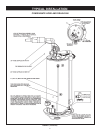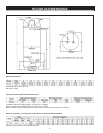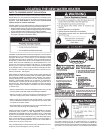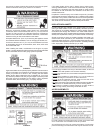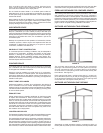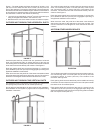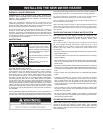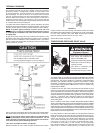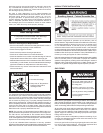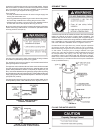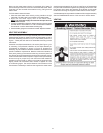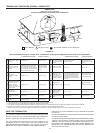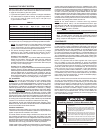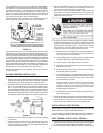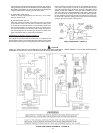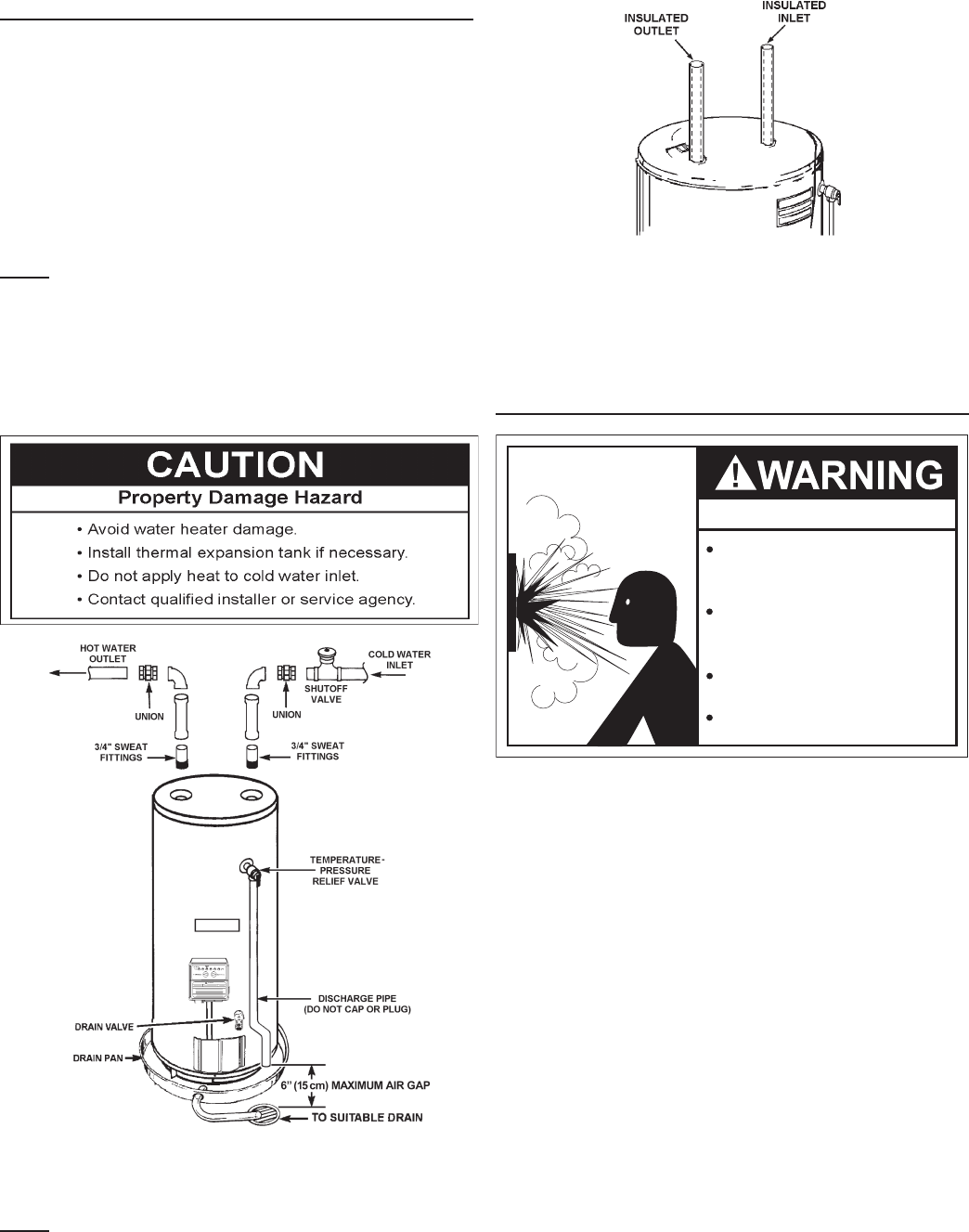
16
THERMAL EXPANSION
Aswaterisheated,itexpands(thermalexpansion).Inaclosedsystem
the volume of water will grow when it is heated. As the volume of water
grows there will be a corresponding increase in water pressure due
to thermal expansion. Thermal expansion can cause premature tank
failure(leakage).Thistypeoffailureisnotcoveredunderthelimited
warranty. Thermal expansion can also cause intermittent Temperature-
Pressure Relief Valve operation: water discharged from valve due to
excessive pressure build up. This condition is not covered under the
limited warranty. The Temperature-Pressure Relief Valve is not intended
for constant relief of thermal expansion.
A properly sized thermal expansion tank must be installed on all closed
systems to control the harmful effects of thermal expansion. Contact a local
plumbing service agency to have a thermal expansion tank installed.
NOTE: To protect against untimely corrosion of hot and cold
water ttings, it is strongly recommended that di-electric unions
or couplings be installed on this water heater when connected
to copper pipe.
All gas piping must comply with local codes and ordinances or with
theNationalFuelGasCode(ANSIZ223.1/NFPA-54)ortheNatural
GasandPropaneInstallationCode(CAN/CSAB149.1)whichever
applies.Copperandbrasstubingandttings(excepttinlinedcopper
tubing)shouldnotbeused.
FIGURE 10.
Figure 10 shows typical attachment of water piping to the water heater.
The water heater is equipped with 3/4 inch NPT water connections.
NOTE: If using copper tubing, solder tubing to an adapter before
attaching the adapter to the water heater connections. Do not
solder the water lines directly to the water heater connections.
It will harm the dip tube and damage the tank.
T & P Valve and Pipe Insulation (if supplied)
Remove insulation for T & P valve and pipe connections from carton.
FIGURE 11.
Fit pipe insulation over the incoming cold water line and the hot water
line. Make sure that the insulation is against the top cover of the heater.
Fit T & P valve insulation over valve. Make sure that the insulation
does not interfere with the lever of the T & P valve.
Secure all insulation using tape.
TEMPERATURE-PRESSURE RELIEF VALVE
Explosion Hazard
Temperature-Pressure Relief Valve
must comply with ANSI Z21.22-
CSA 4.4 and ASME code.
Properly sized Temperature-Pressure
Relief Valve must be installed in
opening provided.
Can result in overheating and
excessive tank pressure.
Can cause serious injury or death.
Thiswaterheaterisprovidedwithaproperlyrated/sizedandcertied
combinationTemperature-PressureReliefValve(T&Pvalve)bythe
manufacturer.Thevalveiscertiedbyanationallyrecognizedtesting
laboratory that maintains periodic inspection of production of listed
equipment of materials as meeting the requirements for Relief Valves
forHotWaterSupplySystems,ANSIZ21.22•CSA4.4,andthecode
requirements of ASME.
If replaced, the new T&P valve must meet the requirements of local
codes, but not less than a combination Temperature-Pressure Relief
Valverated/sizedandcertiedasindicatedintheaboveparagraph.
The new valve must be marked with a maximum set pressure not to
exceed the marked hydrostatic working pressure of the water heater
(150psi=1,035kPa)andadischargecapacitynotlessthanthe
waterheaterBtu/hrorkWinputrateasshownonthewaterheater’s
model rating plate.
Note: In addition to the factory installed Temperature-Pressure Relief
Valve on the water heater, each remote storage tank that may be installed
and piped to a water heating appliance must also have its own properly
sized, rated and approved Temperature-Pressure Relief Valve installed.
Call the toll free technical support phone number listed on the back cover
of this manual for technical assistance in sizing a Temperature-Pressure
Relief Valve for remote storage tanks.
For safe operation of the water heater, the Temperature-Pressure
Relief Valve must not be removed from its designated opening nor
plugged. The Temperature-Pressure Relief Valve must be installed
directlyintothettingofthewaterheaterdesignedfortherelief
valve. Install discharge piping so that any discharge will exit the
pipe within6 inches(15.2cm)aboveanadequateoordrain,
or external to the building. In cold climates it is recommended
that it be terminated at an adequate drain inside the building. Be
certain that no contact is made with any live electrical part. The



